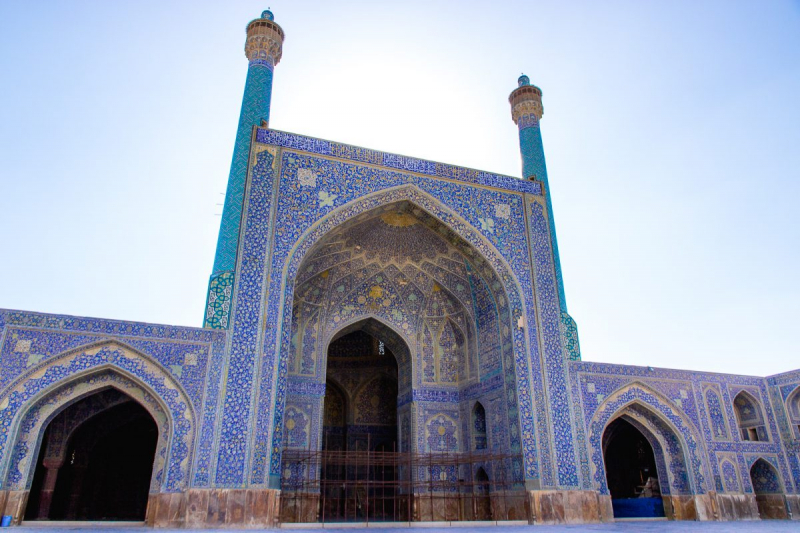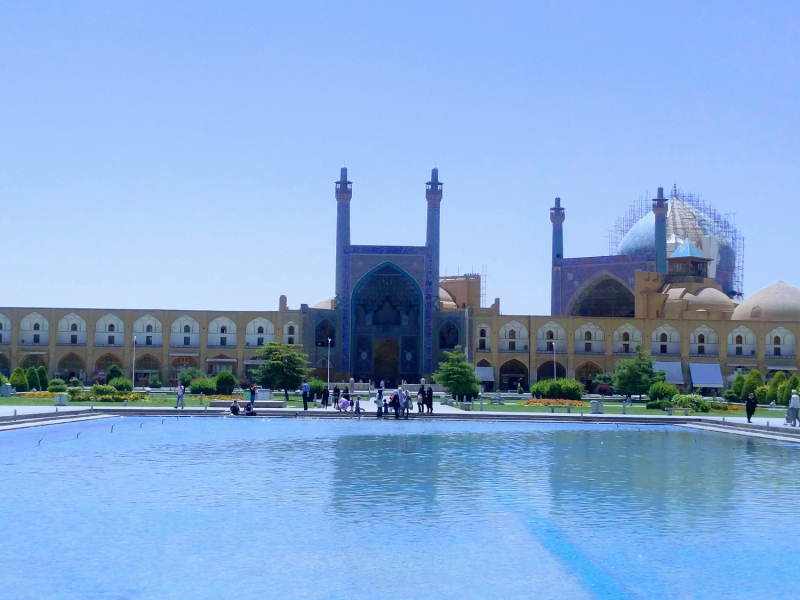Shah Mosque

In Isfahan, Iran, there is a mosque called the Shah Mosque. On the southern side of Naghsh-e Jahan Square, it is situated. Shah Abbas I of Persia gave the order for its construction to take place during the Safavid era. It is recognized as one of the pinnacles of Islamic-era Persian architecture. Together with Naghsh-e Jahan Square, the Royal Mosque is listed as a UNESCO World Heritage Site. Its splendor is primarily a result of the elegance of its seven-color mosaic tiles and calligraphic inscriptions and building on it started in 1611. The mosque is shown on the back of the Iranian banknote worth 20,000 rials. In 2022, damage was discovered.
The entry portico draws visitors' attention with its beauty just before they enter the mosque. The ornamental muqarnas vaulting in the Iwan entryway primarily serves as a metaphor for God creating the cosmos. Additionally, it will gently transition the guests into the dome ceiling. In addition, two majestic 42 m-tall minarets with wooden balconies on top rise to the sides of the main gate.
It goes without saying that building the mosque has been extremely difficult. Mosques must be aligned towards Mecca in order to be built according to Islamic design. However, Shah Mosque's designers had to work harder to attain the essential alignment. So, when guests enter the building through the entrance portal, they will notice a subtle shift to the right along a curved hallway that leads to a sizable courtyard that is bordered by intriguing two-story arcades. The Sangab is located in the hallway. Originally, the purpose of this beautiful stone water trough was to serve as a water source for the guests.
Location: Isfahan, Iran
















